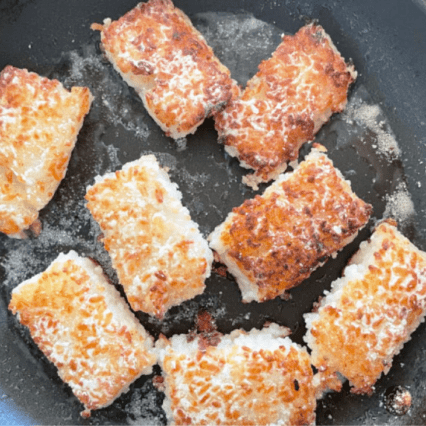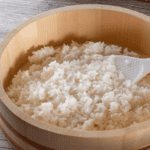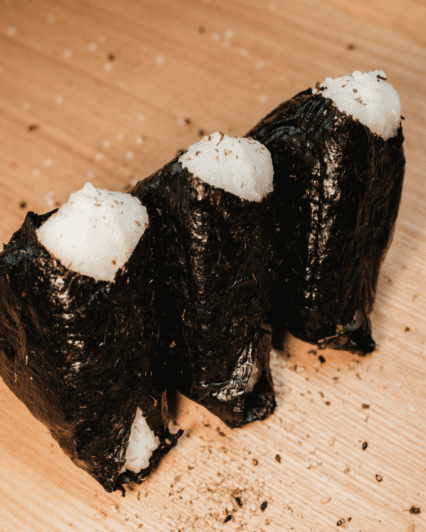How to Make Crispy Rice

How to Make Crispy Rice
While crispy rice dishes may seem challenging to make at home, they are quite simple to prepare, and you can try making them yourself!
What you’ll need:
For best results, use sushi rice because it’s stickier. If you don’t have sushi rice, opt for other short-grain rice. Longer-grain rice has a lower starch content which will prevent it from being cohesive and harder to shape.
If you’d like to add extra flavor to the rice, you can season it with sushi rice seasoning which is just Rice vinegar, salt and sugar.
To turn normal rice into crispy rice and make it a full snack, you’ll also need oil and your choice of toppings.
Crispy rice can be molded into different shapes and served in different ways. Its satisfying crunch and soft interior make it a great base for other toppings.
Making it crispy:

You can make crispy rice from both fresh rice and leftover rice. If you’re using fresh rice, you’ll want to wash the rice before cooking. Although you want the higher starch content of sushi rice, washing it helps achieve the right consistency, making the grains cohesive without becoming overly sticky.
If you’re using leftover rice, it may be a bit dry, making it difficult to form. To get it back to a more moldable consistency, you can rehydrate the older rice in a bowl by covering it with a damp paper towel, and microwave briefly.
Once you have plumped up leftover rice (or freshly-cooked rice), move it to a mixing bowl. Add rice vinegar, salt and a bit of sugar if preferred. Mix gently to avoid breaking the grains; you want the grains to be thoroughly seasoned and sticky, but still retain their individual integrity.
Then, line a tray with cling wrap, add the rice, and spread it out over the sheet to the desired thickness for when you cut it into finger food-sized pieces. Place the tray in the for about three hours, allowing the rice to cool and set into shape
Once chilled, cut the rice sheet into bite-sized rectangles and prepare your oil on the stove. Use a neutral, high smoke point oil (such as sunflower, canola, peanut, or safflower).
You can deep fry your rice cubes — restaurant-made crispy rice bites are often done this way — but you can also shallow fry or pan fry them in a skillet.
For frying in a skillet, heat the oil to a temperature of 350-375 degrees Fahrenheit. Test the oil by dropping in a few grains of rice; if they sizzle immediately, the oil is ready. If not, wait a bit and test again. If you fry with oil that is not hot enough, the rice cubes will soak up oil and become greasy.
Place the rice pieces in the hot oil and until the first side is golden brown, then flip it and fry the other side. Each side should take a few minutes. Avoid moving the rice too soon; if it sticks to the pan, it needs more time to cook.
When ready, remove your crispy rice from the pan and allow them to rest on a rack or paper towels to drain excess oil.
Boom, now you’ve got crispy rice! Enjoy your crispy rice as a base with your favorite toppings.
Topping ideas:
Common toppings for crispy rice at restaurants include spicy raw tuna, avocado, and thinly-sliced jalapenos. But there’s no limit to what you can use to top crispy rice. Alternatively, you can make thinner crispy rice “chips” and accompany them with dips and sauces.
Other toppings that are popular and have a similar flavor profile include raw or smoked salmon, cucumber, and crab. You can spice them up with Kewpie mayo, sriracha, and other additions. For a more convenient option, substitute canned tuna for fresh tuna.
Feel free to explore other toppings or take the flavors in a different direction. Some that might go well with the above-mentioned toppings or work well in different combinations include:
- Vegetables: Shredded carrots, cucumbers, avocado or green onion
- Proteins: Pork belly, tofu, mozzarella, carpaccio or tartare
- Sauces: Teriyaki, sriracha, spicy mayo, cream cheese or chili crunch
- Pickled Vegetables: Kimchi, daikon, carrots or onions
- Fresh Herbs: basil, shiso, mint or cilantro
The only real requirement is that the toppings should be easy to bite through. For instance, a slice of steak might not work well unless thinly sliced because it would be much harder to bite through than the crispy rice itself.
As a satisfying, crunchy-yet-neutral base, crispy rice provides a textural backdrop on which there is genuinely no end of topping options. (“Top-tions,” if you will.) They’re a great way to make sure no leftover rice goes to waste and, while the chilling takes a while, they’re much simpler to make than they might seem.




